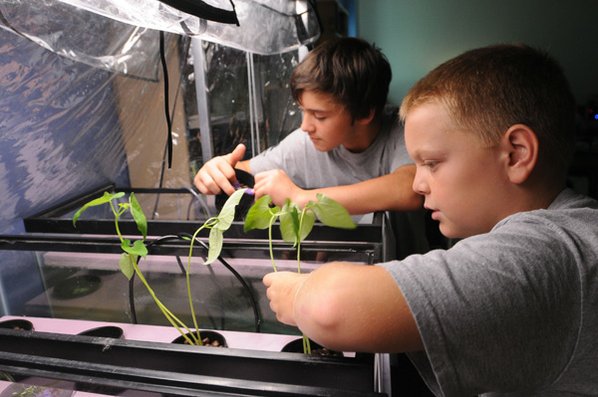 When we’re fresh out of college, many of us find jobs that are not necessarily our dream careers. We do this because we are finally on our own and suddenly have bills to pay and rent to make. Some of us are lucky enough to find that perfect job right out of the gate, but a lot of people know what it’s like to spend a year or two (or more) toiling away at something that doesn’t tick all the boxes for us.
When we’re fresh out of college, many of us find jobs that are not necessarily our dream careers. We do this because we are finally on our own and suddenly have bills to pay and rent to make. Some of us are lucky enough to find that perfect job right out of the gate, but a lot of people know what it’s like to spend a year or two (or more) toiling away at something that doesn’t tick all the boxes for us.
The question is, what are the boxes?
In Outliers, Malcolm Gladwell lists three things that make work meaningful:
- Complexity
- Autonomy
- A relationship between effort and reward
The perfect job, then, is one in which our minds are engaged cognitively — there must be intellectual challenge to keep things interesting. Joel Salatin, who is probably the most famous farmer in the world, practices a type of rotational grazing and system-stacking that makes farming an endless intellectual exercise. That’s complexity. And there must be autonomy, the opportunity to choose your own direction, order your days as you see fit, set your own goals, decide how you will reach those goals, what methods you will employ. Having choice allows us to feel in control and allows us to decide how to optimize our time. We still have to do the work, but deciding how we’ll do it is empowering. And there must be a relationship between effort and reward. Without that relationship, a lot of the meaning of the work is eroded.
All this explains why tasks like laundry are not very satisfying: as you finish it, more is piling up. However much effort you put into it, more remains. The effort is unchanging, there is no cognitive complexity to engage the mind (challenging stains, maybe?) and the only choices you can make about it are which loads to do first.
Meaningful work is why some people become teachers. Teaching, actually, ticks all three boxes: it has a high degree of complexity to engage the mind, it has plenty of autonomy within the confines of the classroom, and there is a relationship between effort and reward, though this last one isn’t a perfect 1:1 proposition. But when the reward does happen? When understanding dawns and those little lightbulbs go on over kids’ heads? Magic.
I would submit, though, that education doesn’t do a very good job of making the work of classrooms meaningful to kids. Consider the following:
- Complexity: too often, even in schools labeled “high achieving”, the work we ask students to do is not cognitively demanding. Far too often we ask them to do low-level worksheets that are abstract and not engaging, however cute the artwork is around the title. A large body of research confirms that the more hands-on the work is, the more connected it is to real-world situations, the more cognitively complex it is, the better students learn. They will be more engaged and they will retain more. Complexity is especially required for at-risk students and ELLs.
- Autonomy: Students spend their days in schedules not of their own making, doing activities they haven’t elected to do. Again, ample evidence shows that when students can choose how they will demonstrate their learning, their engagement and retention goes up. As a side benefit, letting kids differentiate their products in this way also reduces some of the need for differentiation in other ways. When they are allowed to choose, the activity automatically becomes more meaningful. Choice is actually fairly easy to integrate into classrooms, yet when we go into districts and analyze student work artifacts, we don’t often see much of it.
- A relationship between effort and reward: This relationship breaks down, I think, because schools and teachers don’t have a clear picture of what they want mastery to look like. If mastery isn’t delineated by the district, then each teacher is free to navigate mastery by whatever means they like, including by “feel,” as in , “this just feels like a C to me.” One of my children worked very hard on a project for fifth grade, only to receive a low grade because the artwork for the project wasn’t very good. Everything else, the text, the other components, was done very well but the drawings to illustrate them were rudimentary because this child of mine is no artist. The relationship between the effort (considerable) and the reward (lousy) broke down here because the teacher emphasized something that had nothing at all to do with mastery of the content, which was understanding plot elements. If the relationship breaks down repeatedly, the child will stop putting forth the effort because there’s no payoff.
The recipe for improvement here seems simple: make work cognitively challenging, allow for student choice wherever possible, and make sure mastery is clearly delineated so students feel rewarded when they meet standards. One of the best ways to see how often these things are occurring is to look at what kids are being asked to do in the classroom. This type of analysis is something we perform for districts all the time and it provides a wealth of information about cognition levels, engagement, alignment to standards and high-stakes tests, and even equity. CMSi also offers Resource Alignment and Examining Student Work, a training to teach principals, lead teachers, and administrators how to conduct this type of analysis in their own districts. Contact us for more information or to schedule a training.
